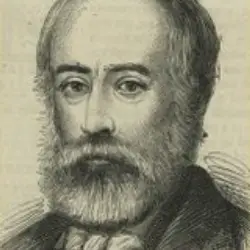Early life
SIR ARTHUR HELPS (1813-1875), was an English writer who also worked as a clerk of the Privy Council. He was the youngest son of a merchant in London, Thomas Helps, and was born in Streatham on July 10th.
He had his education at Cambridge, at the Eton and at Trinity College. He was recognized as a man of wit, intellect, and superior gifts by his peers and contemporaries. He was also in contact with Frederick Maurice, Arthur Hallam, Richard Chenevix Trench, etc due to his inclusion in the “Apostles” society of social and literary interests.
List of Famous Works of Sir Arthur Helps
He had his first literary work in 1835 when he wrote Thoughts in the Cloister and the Crowd. It was a series of observations about life, people, character, and politics.
Later, in 1841, Intervals of Business featured his essays. He later also wrote 2 plays: King Henry the Second, and Catherine Douglas, the former being a historical drama and the latter being a tragedy, published in 1843.
Helps took a different approach in his Friends in Council, wherein he analyzed and present social problems and phenomena by dialogues between the characters in the story. This gained him, and the book quite a fame, and the same method was adopted in Conversations on War and General Culture, which was published in 1871.
The same characters also made an appearance in one of his most admired later works, Talk about Animals and their Masters (1873).
His other famous works include The Life of Las Casas, (1869), The Life of Pizarro (1869), Organization in Daily Life, an Essay (1862), Brevia, and The Life of Hernando Cortes (1871), Short Essays and Aphorisms (1871), Thoughts upon Government (1872), Life and Labours of Mr Thomas Brassey (1872), The Life of Columbus (1869), Ivan de Biron (1874), Social Pressure (1875), the Apostle of the Indians (1868), Casimir Maremma (1870).
Sir Arthur Helps’ Later Life
He was in personal communication with Queen Victoria due to his position as the Council Clerk, it is said that he acquired the respect of both, the Queen and her consort.
The Queen then approached him, after the death of her husband, in order to ask him to prepare a memoir of his appreciation, which he did in 1862 in his introduction to the collection (1862) of the Prince Consort’s speeches and addresses.
After a few years, he edited and wrote a preface to the Queen’s Leaves from a Journal of our Life in the Highlands (1868). He, later, in 1864, received the degree of D.C.L. from the University of Oxford and was made a C.B. in 1871 and K.C.B. in the following year.
However, in his later years, he was financially troubled, finally passing away on the 7th of March 1875.
